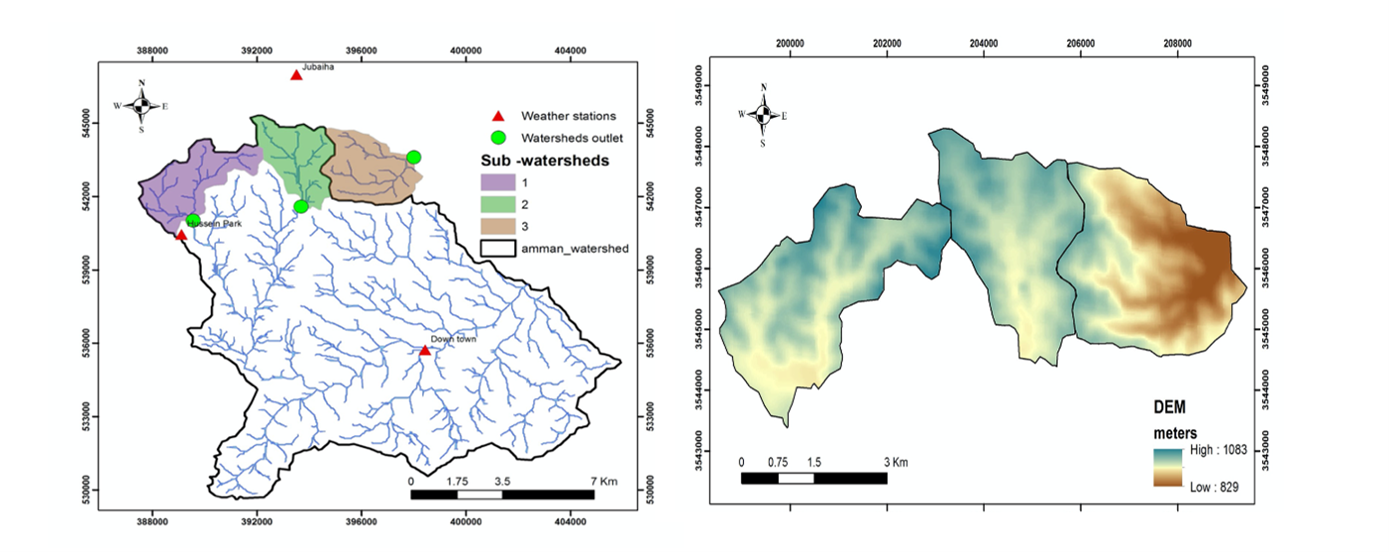A monitoring campaign was carried out across three sub-catchment areas in Amman (Figure 1) from January 11th to April 10th, 2024. Grab samples were taken at the start of each rainfall event from both the inlet and outlet culverts of the sub-catchments. These samples were analyzed for PAHs, trace metals, COD, turbidity, and other environmental parameters. In addition, air quality data — including PM2.5, nitrate, and ozone — were collected from monitoring stations within the sub-catchments. Preliminary results indicated PAH concentrations ranging from 4000 to 7000 ng/g, with significantly lower concentrations observed in the liquid fraction, as expected.

Aluminum, Iron, and Nickel showed elevated levels across the three sub-catchment areas, posing the greatest concern relative, for instance, to the acceptable limits for treated wastewater. More importantly, the labile fraction of these metals, which provides a strong indicator of their potential bioavailability, will be measured during the upcoming monitoring campaign.
Additionally, Dry weather samples will be collected for air during summer 2025 and analysed for the PAHs and heavy metals. Accordingly, results will be analysed, and correlations will be withdrawn for different air quality parameters and PAHs concentrations during rainy season.
Authors: Maha Halalsheh, Ghada Kassab, and Khaldoun Shatanawi